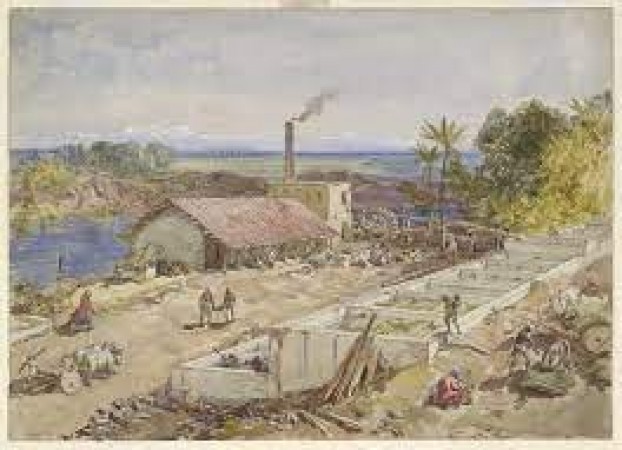
The Indigo Revolt stands as a significant chapter in India's colonial history, representing the tenacity and determination of oppressed peasants against the unjust indigo plantations in Bengal. This article delves into the origins, causes, impact, and aftermath of the Indigo Revolt, shedding light on the courage displayed by the farmers as they rose against their oppressors.
Understanding Indigo Plantations in Bengal
Indigo cultivation was introduced in Bengal during the British colonial era as a cash crop for export, yielding significant profits for the colonial masters. The rich indigo dye extracted from the plant was highly sought after in the textile industries of Europe. As demand soared, the cultivation of indigo expanded rapidly across Bengal, primarily in the districts of Bengal Presidency.
The British Colonial Indigo Trade involved exploitative practices where the peasants were compelled to cultivate indigo on a portion of their land, often through contracts imposed by indigo planters. These contracts subjected the farmers to unfair terms, low wages, and oppressive working conditions, pushing them into a cycle of debt and poverty.
The Plight of the Peasants
The peasants, who were the backbone of indigo cultivation, faced dire circumstances under the exploitative indigo farming contracts. They were forced to allocate a substantial portion of their land to indigo cultivation, leaving them with limited space to grow food crops for sustenance. This led to food shortages and economic hardships for the farming communities.
Furthermore, the wages provided to the peasants for their labor in indigo cultivation were meager and inadequate to meet their basic needs. The harsh working conditions and the pressure to meet unrealistic production targets made their lives unbearable, perpetuating a system of indebtedness to the indigo planters.
The Sparks of Resistance Ignite
The situation escalated due to the role played by Zamindars, who acted as intermediaries between the British colonial rulers and the peasants. Zamindars, motivated by their own interests, actively collaborated with the indigo planters, exacerbating the grievances of the farmers. As early signs of discontent emerged among the peasants, their frustration and anger grew. The Zamindars' support for the indigo planters further fueled the flames of rebellion.
Leadership and Organization
Amidst the growing unrest, a few courageous individuals emerged as leaders of the Indigo Revolt. These leaders fearlessly voiced the grievances of the oppressed peasants and organized them into united fronts to resist the exploitative practices of the indigo planters and the British authorities.
Peasant committees were formed to coordinate and strategize their actions. These committees provided a platform for the peasants to express their concerns, develop plans for direct action, and channel their collective energy toward bringing about meaningful change.
The Indigo Rebellion Unfolds
The Indigo Revolt reached its pinnacle as numerous indigo plantations faced coordinated attacks by the rebellious peasants. Determined to break free from the clutches of oppression, the farmers raided plantations, uprooted indigo crops, and sent a powerful message to the British colonial rulers.
Confrontations between the rebels and the British authorities were inevitable, leading to intense clashes. The revolt garnered attention and support from other sections of society, widening the scope of the resistance.
British Response and Suppression
The British colonial authorities responded to the uprising by deploying military forces to crush the rebellion. The clash between the well-armed British forces and the peasant rebels resulted in significant casualties on both sides. To suppress the revolt, the British colonial rulers also arrested and persecuted the leaders of the Indigo Revolt. Many rebels were subjected to severe punishments, including imprisonment and execution.
The Aftermath and Legacy
Despite the eventual suppression of the Indigo Revolt, the uprising had a profound impact on the policies surrounding indigo farming. The British authorities were forced to reconsider their exploitative approach, and reforms were introduced to alleviate some of the hardships faced by the peasants.
The Indigo Revolt also left a lasting legacy on India's freedom struggle. The unity and resilience displayed by the peasants served as an inspiration for future movements against colonial oppression. The fight against indigo plantations marked a crucial phase in the path to India's independence. The Indigo Revolt stands as a testament to the unwavering spirit of the Indian peasants who refused to be enslaved by oppressive indigo plantations. The resistance they mounted against the exploitative system showcased their courage and determination to reclaim their dignity and rights.
Hepatitis B and C: The Global Health Challenge Unveiled
Champion of Equality: Lala Lajpat Rai's Fight for Social Reforms
The Global Burden of Malaria: Prevention and Eradication Efforts